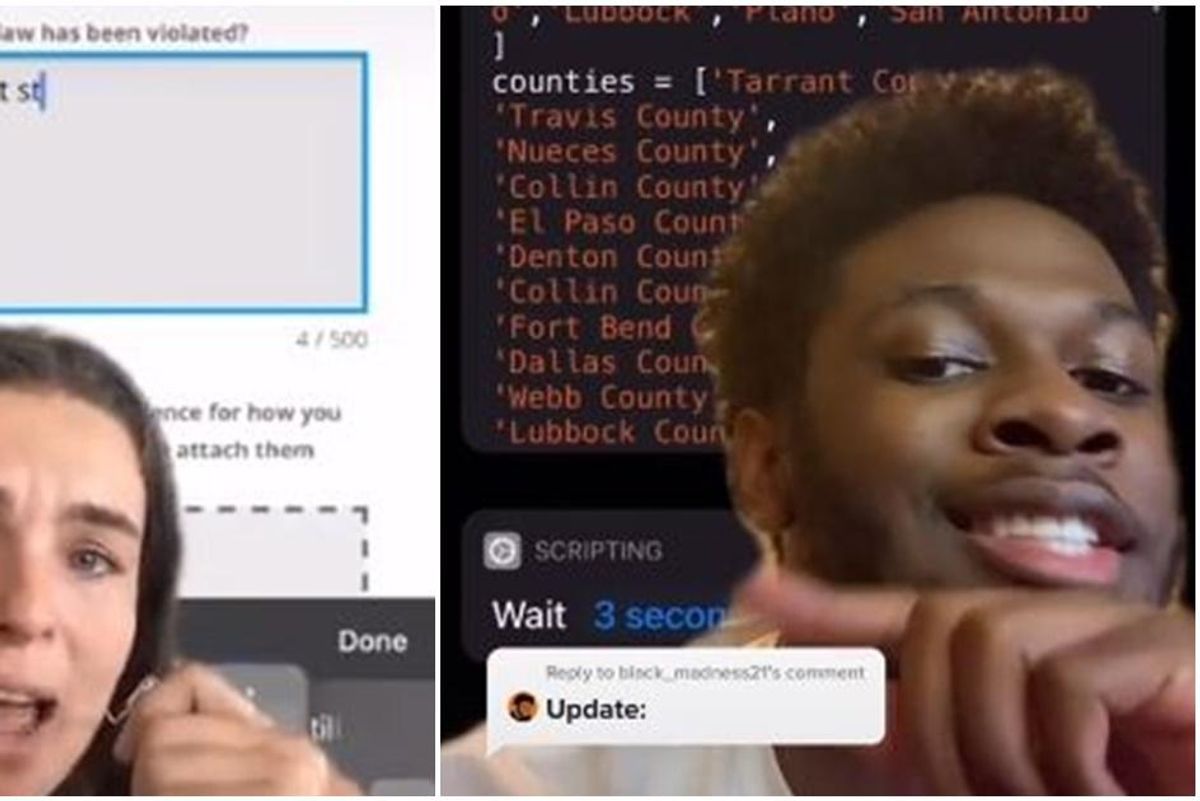People are fighting Texas' abortion law by spamming the tip line used to target women

Texas's repressive anti-abortion law known as the Heartbeat Bill went into effect overnight Wednesday after the Supreme Court refused to act on it by a 5-4 margin.
The law bans abortions of fetuses over six weeks old. This would criminalize approximately 85% of Texas women who access abortion care because a vast majority have no idea they are pregnant after just six weeks.
Supreme Court Justice Sonia Sotomayor wrote a scathing dissent to the decision, accusing five of her fellow judges of burying "their heads in the sand."
"The Act is a breathtaking act of defiance — of the Constitution, of this Court's precedents, and of the rights of women seeking abortions throughout Texas," she continued. "The Court should not be so content to ignore its constitutional obligations to protect not only the rights of women, but also the sanctity of its precedents and of the rule of law."
Supreme Court Justice Sonia Sotomayor wrote a scathing dissent late Wednesday night over after the court's 5-4 decision to not halt Texas' abortion bill, the most restrictive abortion measure in the country. https://cbsn.ws/3jBZg48\u00a0pic.twitter.com/Zl9KfnNPvW— CBS News (@CBS News) 1630593901
One of the most disturbing aspects of the bill is that it puts bounties on the heads of abortion providers, those who have the procedure, anyone who helps in the process. Texans who report people they believe have violated the law are eligible for a $10,000 payment if they're convicted.
Earlier this summer, anti-abortion activist group Texas Right to Life, launched a website called ProLifeWhistleBlower.com that allows anyone to report those they believe have violated the new law.
"Texas Right to Life will ensure that these lawbreakers are held accountable for their actions," the site says.
Thousands of people on social media are fighting back against Texas Right to Life by spamming the site with so many fake tips that it would be impossible to act on any legitimate claims.
Feeling helpless and mad? Let's flood this site with so much stuff that they have to shut it down.https://prolifewhistleblower.com/anonymous-form/— Kathleen Hanna (@Kathleen Hanna) 1630536614
TikTokker @victoriahammett was one of the first to rally people to the cause.
OMG! This is genius! \n#TexasAbortionBan \nhttps://prolifewhistleblower.com/\u00a0pic.twitter.com/xgpvESdc5b— Jamie Carter (@Jamie Carter) 1630527591
Sean Black took things a step further by creating a bot that sends requests to their site every 10 to 15 seconds.
@black_madness21 #stitch with @victoriahammett I’ll see if I can add some multithreading to speed up this process
Black's IP was banned by the website so he responded by creating an iOS shortcut that allows anyone with an iPhone to replicate what he did.
@black_madness21 Reply to @black_madness21 #texas #abortion #gregabbott
To make life even worse for the people who work at the tip line, TikTiokker @williamshaughn_ spamming the site with NSFW Shrek memes.
@williamshaughn_ #abortionispoggers #prochoice #abortion #abortionisahumanright
There has been a robust discussion on Twitter about the best way to disrupt the whistleblower site. Some are bombarding the tip line with angry messages while others are making requests that appear real to misdirect those who are tasked with investigating potential violators.
If you are doing this, don't send memes or use names of politicians etc.\n\nUse names that sound real, use locations that you might have been to or seen, make it as real as possible so these people actually have to go investigate and waste their time.\n\nHave fun!!!— Sonu (@Sonu) 1630562424
It's unclear what's going to happen with women's reproductive rights going forward and there's good reason to be alarmed. However, it's great to see there countless passionate people still giving their all to fight back against those who want to pit neighbor against neighbor in service of a regressive agenda.
- A mother's heartbreaking story highlights the challenge of defining ... ›
- Abortion rights groups sue to block Texas law allowing citizens to ... ›
- Texas valedictorian gave unapproved speech on abortion bill ... ›
- The brave doctor who performed an abortion in Texas is being sued by a disbarred lawyer serving jail time - Upworthy ›
- The brave doctor who performed an abortion in Texas is being sued by a disbarred lawyer serving jail time - Upworthy ›
- Pro-choice rallies held in over 600 cities across America ›
- Pro-choice rallies held in over 600 cities across America - Upworthy ›
- Students walk out of pro-life assembly at Catholic high school - Upworthy ›

